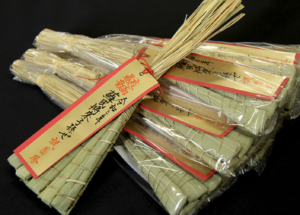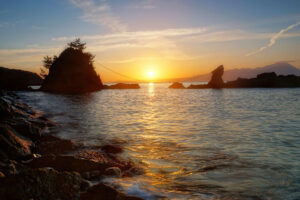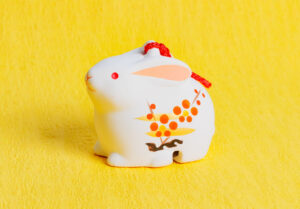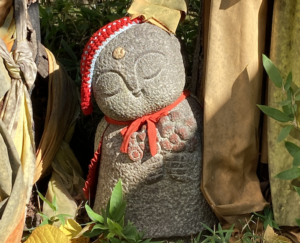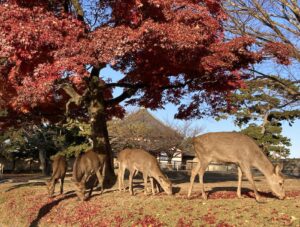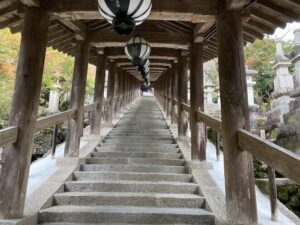In ancient Japan, the phases of the moon and the movement of the sun have been used as clues for knowing changes in seasons and years.
“Nijushi_sekki”, or 24 seasonal divisions, divide the year into 24 equal parts, which are then divided into 15 days. Each Sekki is represented by the weather and living creatures, such as “Risshun,” “Usui,” and “Keichitsu,” and has been used as a guide to the seasons since ancient times. Even today, they are still used to express the seasons.
Spring seasonal divisions
立春/ Risshun
Around February 4th
The first day of spring. It is the time when the weather is cold but the sun is shining like spring. The first of the 24 seasonal divisions. The day before Risshun is the so-called “Setsu_bun
雨水/ Usui
Around February 19th
Snow changes to rain, and the snow that has accumulated begins to melt.
啓蟄/ Keichitsu
Around March 6th
The earth warms up and insects that have been hibernating in the soil come out to the ground.
春分/ Shunbun
Around March 21st
The day when the length of day and night are almost the same. Daytime becomes longer from this day. The middle day of the Spring equinox, a national holiday.
清明/ Seimei
Around April 5th
The season of purity and brightness. It is the time when flowers, plants and trees start to bud.
穀雨/ Kokuu
Around April 20th
The season when spring rains fall and the rain makes the grains grow.
Summer seasonal divisions
立夏/ Rikka
Around May 6th
The first day of summer. The weather is fresh and clear with fresh greenery.
小満/ Syōman
Around May 21st
The season when plants and trees are in full bloom. Around the time when farmers begin to prepare for rice planting.
芒種/ Bōsyu
Around June 6th
The time when grain seeds are sown.
夏至/ Geshi
Summer Solstice: Around June 21st
The day when the sun is at its highest altitude and daylight is the longest day of the year. It is the midpoint of summer according to the calendar. After the summer solstice, the heat increases.
小暑/ Shōsho
Around July 7th
Temperatures begin to rise.The rainy season is over and it becomes more like summer.
大暑/ Taisho
Around July 23rd
The hottest day of the year.This is the “Doyou” period of summer.
Autumn seasonal divisions
立秋/ Risshū
Around August 7th
The first day of autumn. The lingering summer heat continues, but the weather gradually becomes cooler.
処暑/ Shosho
Around August 23rd
Around the time when the heat passes over and the mornings and evenings become cooler. Around the time when typhoons increase.
白露/ Hakuro
Around September 8th
The dew on the flowers and plants in the morning and the autumnal season begins.
秋分/ Syunbun
Autumnal equinox: Around September 23rd
The day when the length of the day and night are almost the same. Daytime becomes shorter from this day. The middle day of the autumnal equinox, a national holiday.
寒露/ Kanro
Around October 8th
The time when cold dew falls on plants and trees. This is the time for the rice harvest.
霜降/ Sōkō
Around October 23rd
Around the time when frost begins to fall in the early morning. This is the time of year when the autumn leaves are beautiful.
<!>霜降り/ Shimofuri ←The kanji characters are the same but have different readings and meanings
- Meat with a fine mesh of fat between the muscles. Mainly beef.
- Preparation of meat and seafood by pouring boiling water over them to remove their odor.
Winter seasonal divisions
立冬/ Rittō
Around November 7th
The first day of winter. The withering wind blows and we can feel the coming of winter.
小雪/ Shōsetsu
Around November 22nd
The temperature begins to cool down and the first snow begins to fall in the fields and mountains.
大雪/ Taishetsu
Around December 7th
The time when the mountains are covered with snow and snow begins to fall on the plains. This is the time when the winter season begins in earnest.
冬至/ Tōji
Around December 22nd
The day when the sun is at its lowest altitude and daylight is the shortest day of the year. People eat pumpkin and take a yuzu (citron) bath to pray for the end of winter and the coming of spring.
小寒/ Shōkan
Around January 5th
The temperature becomes colder and colder. This day is called “Kan no iri”, and the period until Setsubun (the day before Risshun) is called “kan no uchi”.
大寒/ Daikan
Around January 20th
The coldest day of the year. It is the last of the 24 solar terms.
👉Feel free to contact us if you have any questions.


